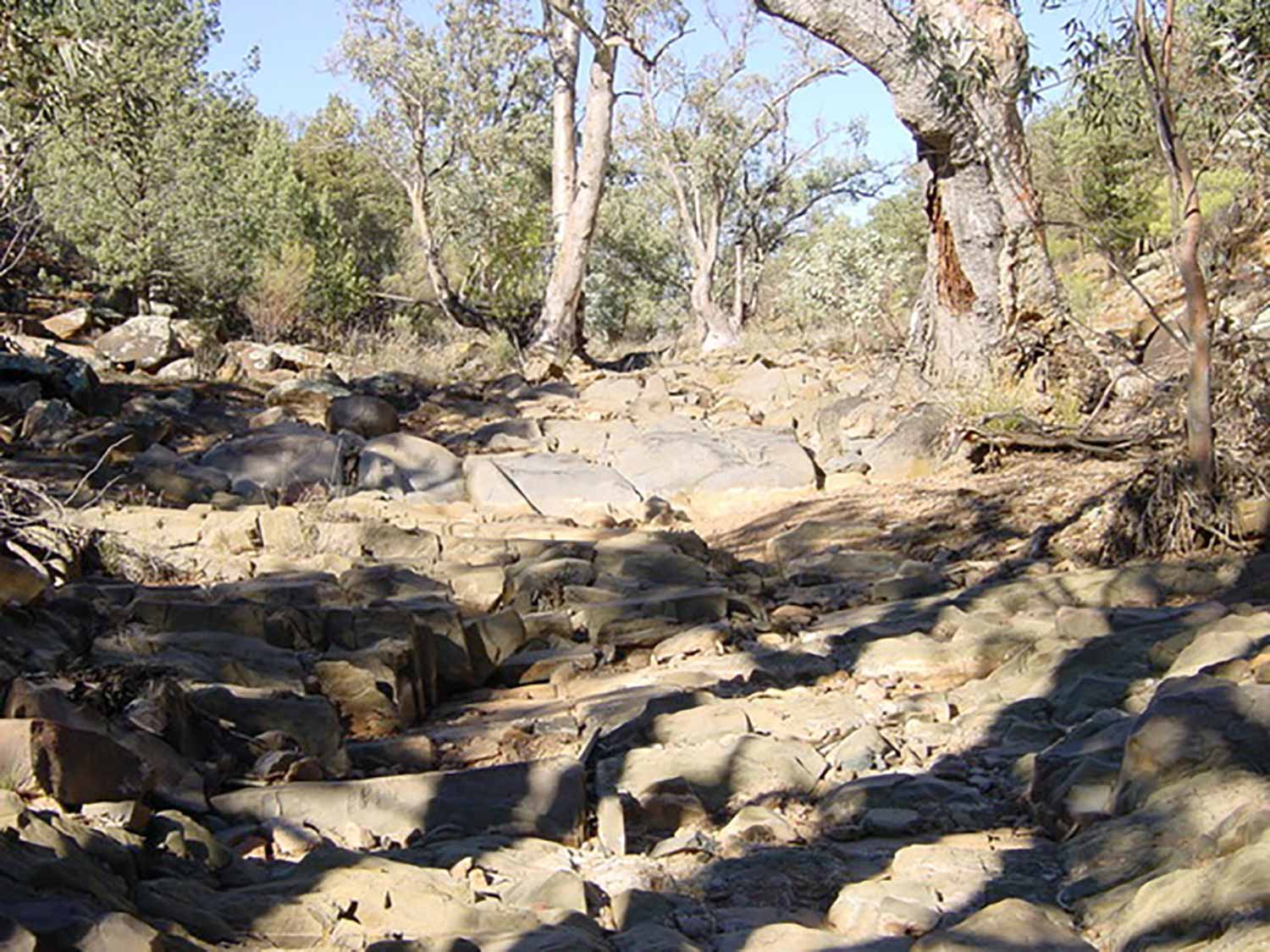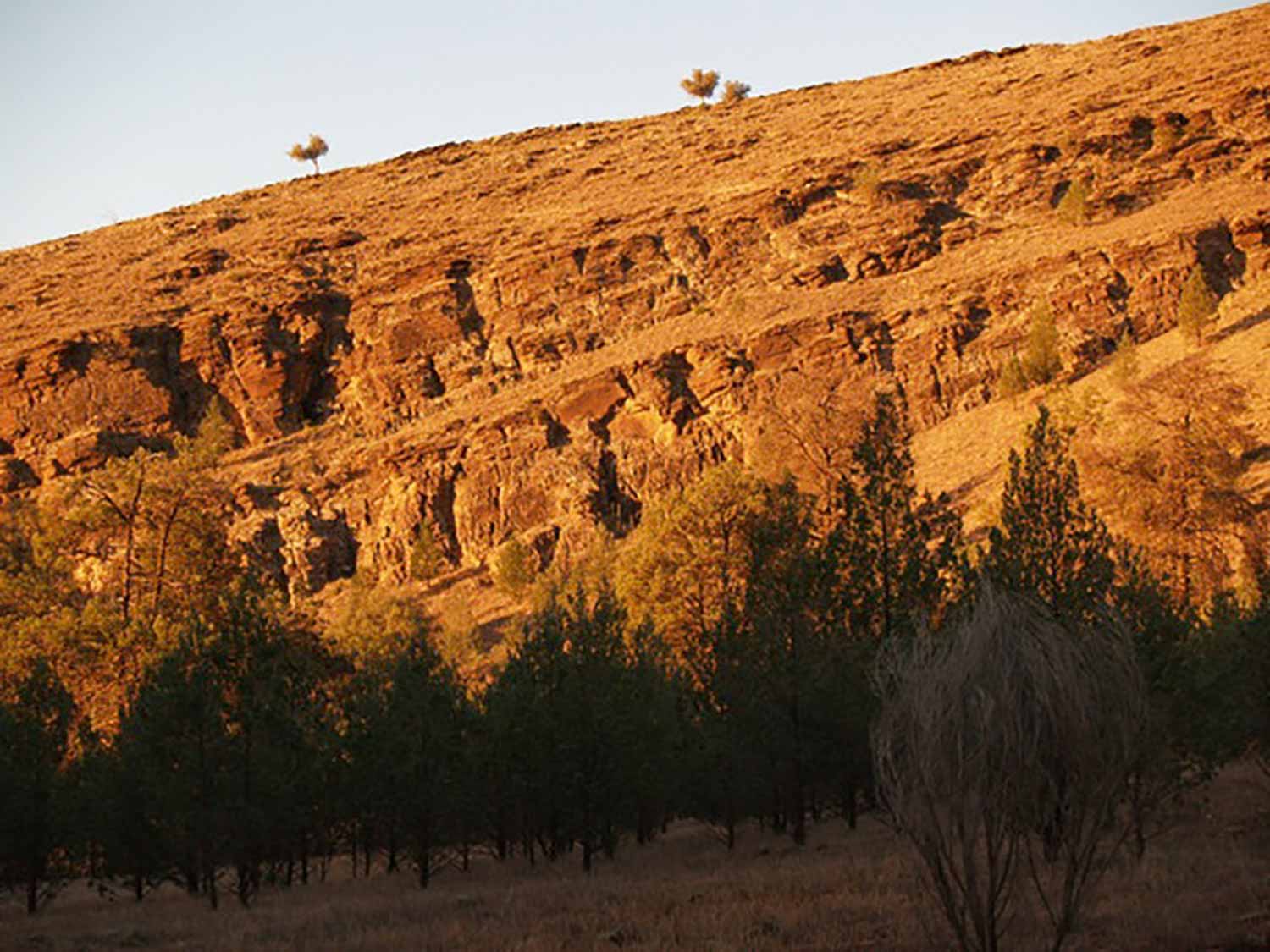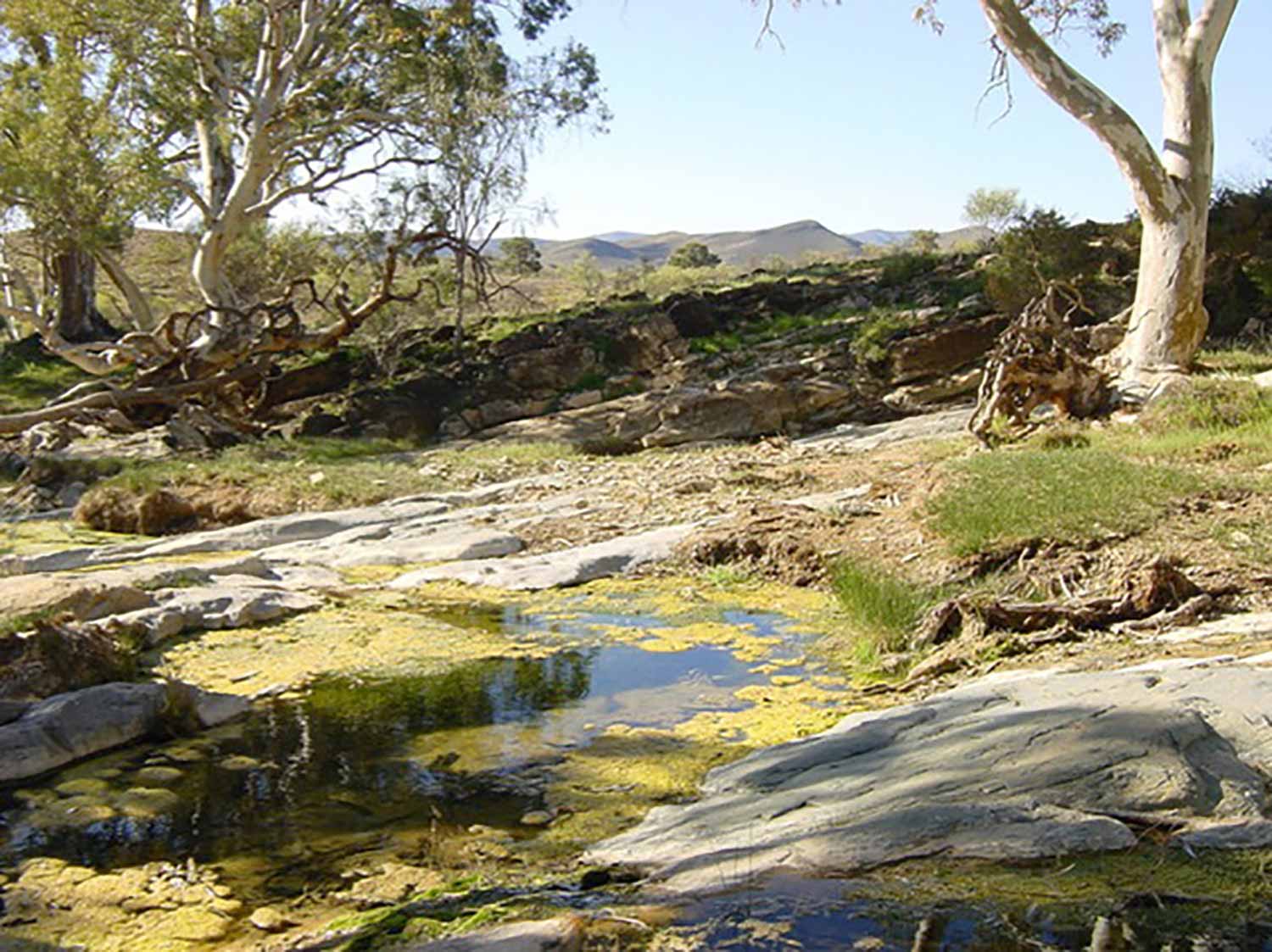- Login
Critical Spatial Practice





In the country arid gardens are often places that keep the inside out: they are places for inward thinking for embracing the other out there and not of here. Gardening for Untold Ecologies writes a discursive manual for making a garden for outward thinking, seeking out the here and now.
Situated in arid central Australia on Adnyamathanha country and Oratunga Station Gardening for Untold Ecologies asks how to make a garden for untending? The proposal states ‘there is a rude wire fence that contains the house yard, yet its ruined garden keep nothing in or very much out. The once was there garden had lawn, fruit trees and roses – not from this place – as long as water and tending were plentiful’. Gardens are most usually made under the ordering of narrative, metaphor or everyday needs, but once there were gardens to encourage expansive thinking. Now there is no manual for this. The Untold Ecologies manual combines fieldwork, lists, collections, ground material, maps, conversations, walks and time travel to make and expanded garden within the ruination of the once was there garden. It remains unfinished.
Gini Lee is a landscape architect, interior designer and pastoralist and is Professor of Landscape Architecture at the University of Melbourne, and Adjunct Professor in Interior Design at RMIT University. She was the Elisabeth Murdoch Chair of Landscape Architecture at UoM from 2011 to 2017. Her academic research and teaching focuses on cultural and critical landscape architecture and spatial interior design theory and studio practice, to engage with the curation and postproduction of complex landscapes. Her multidisciplinary research into the water landscapes of arid territories contributes to the scientific, cultural, and Indigenous understanding of and management strategies for fragile landscapes. Her recent landscape curation and installation practice is an experiment with postproduction and ‘deep mapping’ methods to investigate the cultural heritage and scientific landscapes of remote and rural Australia, Scandinavia, global archipelagos and the arid lands of western USA. From 2014-2018 she was a guest researcher at SLU Malmo where she continues to work in fieldwork-based research into transect travel methodologies. As a Chief Investigator in ‘Place and Parametrics’, 2017–2020, funded by the Australian Research Council, Gini contributes to transdisciplinary thinking and design practice and curation between digital and physical realms in heritage sites. She is a registered landscape architect and is involved in the strategic planning, design and practice of urban and educational landscapes in Melbourne and beyond.
‘Site-writing’ and making is the fundamental basis of my practice as it draws from fieldwork and site works in landscapes and interiors. ‘Deep mapping’ practices that require investigating everything you might want to know about a place inform the collection. Travelling and practising with others is the other necessary ingredient in the archive of experience and material gathered over time that enriches my practice, which is really just an ongoing experiment, now focused on the criticality of water in culture.
William Kentridge’s practice through installation, performance and writing, especially William Kentridge Six Drawing Lessons, The Charles Eliot Norton Lectures, (Boston: Harvard University Press, 2014).
Nicolas Bourriaud’s writings, especially, Postproduction: Culture and Screenplay, How Art Reprograms the World (New York: Lukas & Sternberg, 2002).
Rebecca Solnit’s writing and mapping works such as Wanderlust: A History of Walking (2001) and Mapping the Infinite City (University of California Press, 2019) part of the Complete Atlas Trilogy, with Rebecca Snedeker and Joshua Jelly-Shapiro.



































































